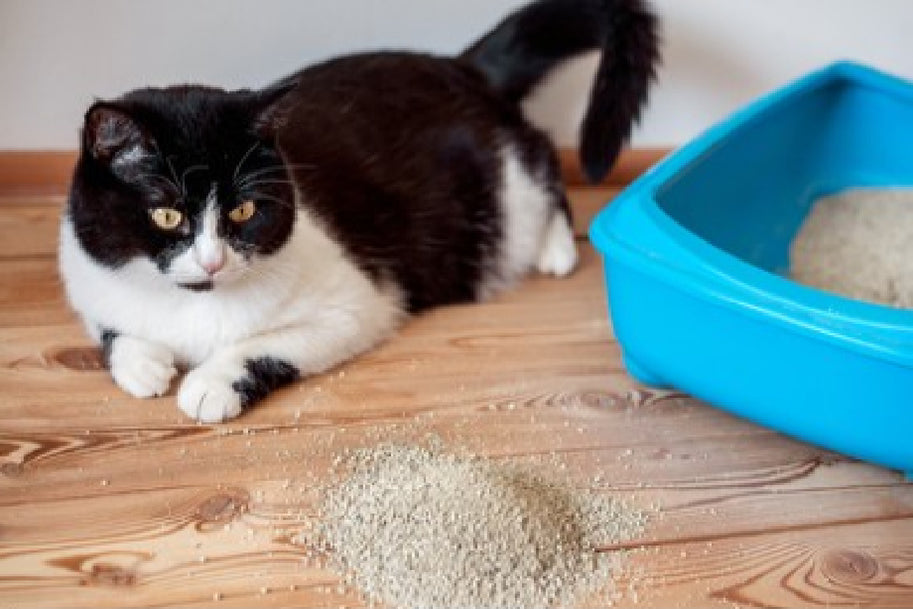Does your cat kick litter all over the floor? What does this mean and how can you stop it?
Despite being skilled predators, cats are also ‘mesopredators’, which means they are both predators and prey. Unlike apex predators at the top of the food chain with no natural predators, cats are in the middle, preying on smaller animals and being preyed upon by larger animals.
Because they are also a prey animal, cats develop instinctive behaviours to protect them from nearby predators. One of these behaviours is digging in the litter tray.
Cats likely dig and cover their waste to hide their presence from other predators, who may be attracted by the scent. Covering waste may also help cats to avoid parasites.
Cat waste also acts as an important communicator to other cats in the area, signalling how long ago a cat came through, a female that may be in heat or many other messages a cat may leave behind. So, what can you do about it so that your cat isn’t kicking litter all over the floor, leaving you to constantly clean it up?
Cats who dig in their litter box for longer probably like their litter box more and are less likely to have problems with urinating or defecating.
There are some simple solutions in setting up litter trays that can keep you and your cat happy – and litter in the tray.
Litter hygiene
Your cat’s hesitance to use their dirty litter tray may be leading them to hedge their bets, sticking to the edge, where the litter is less soaked, and kicking litter all over the floor. Clean the tray regularly. Ideally, remove solid waste as it happens or once a day, and completely change over the litter every few days or before the top layer becomes soaked.
Overfilled litter
More isn’t always better. For cats with health issues such as arthritis, pain or restricted mobility, an overfilled litter box means trying to balance on an unstable mound of litter. And the more litter in the tray, the more litter that can end up on the floor. Even cats without health issues may feel the need to dig deeper to find a stable surface to squat on. This means more litter on the floor both because of the increased volume and the cats’ extra efforts in digging.
Litter box number and choice
Have one litter tray per cat plus one for the household. These should be placed around the house, if possible, in places where your cat feels safe to go about their business. Don’t choose a litter tray that is too small. Cats don’t like being too confined when trying to do their business.
Alternatively, there are some great gadgets on the market so that you never have to touch the litter tray again (well ok only once a month) like the PetSafe ScoopFree Auto cleaning litter box, which is the perfect addition to a household with a messy litter kicking kitty. All you have to do is set it up in the position of choosing, load the disposable litter tray into the unit and leave it! The waste will get automatically pushed to the waste tray leaving clean litter for your cat. Once the tray is full, change it out with a new one. This saves a lot of time and mess for both you and your cat and has been a popular choice amongst cat owners.
You can find these at any Just For Pets independent pet store.
Inappropriate urinating or defecating, especially outside the litter tray could indicate urinary or other medical problems in cats. It could also be a sign of a behavioural issue. If making the changes suggested doesn’t help, you should your vet.


.jpg?v=1667276019028&options=w_600)



